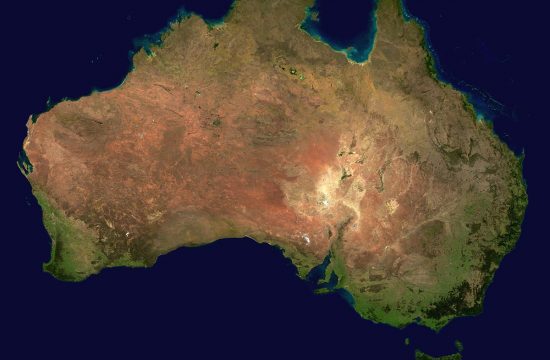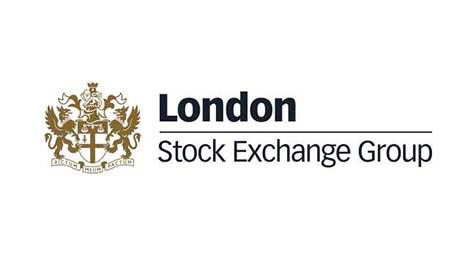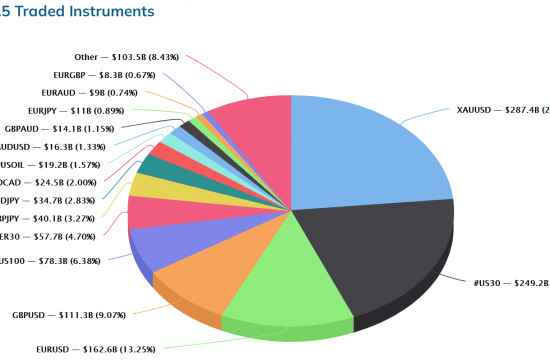Summary: A profit-warning from tech giant Apple due to production slowdowns caused by the coronavirus outbreak in China triggered risk-off in all markets. The benchmark US 10-year Treasury yield fell to 1.55% (1.58%). Gold prices soared 1.15% (US$ 1,603.00). The EUR/USD pair sank to 1.07856, lows not seen since April 2017 following weaker than expected German and Eurozone ZEW Economic Sentiment Index data. The Australian Dollar slipped to 0.66735 overnight after the RBA acknowledged that the COVID-19 outbreak could force its hand to cut interest rates although strong housing prices in Sydney and Melbourne are prevent it from doing so. Sterling ended little-changed against the overall stronger US Dollar following encouraging UK Employment data. Against the Yen, the Dollar finished modestly lower at 109.87 (109.95). The Dollar Index (USD/DXY) was up 0.44% to 99.434 (99.165). Equities slumped. The DOW fell 0.8% to 29,245. (29,470) while the S&P500 pared losses to finish down 0.5% at 3,371. (3,389).
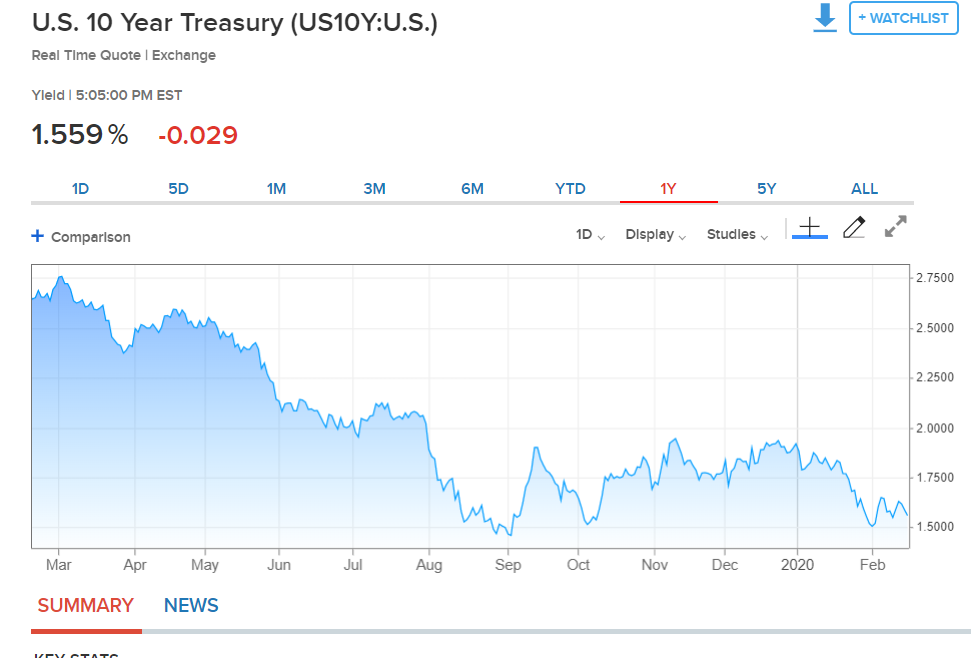
UK Claimant Count Change (change in unemployed seeking benefits) beat forecasts at 5,500 against 20,200 expected. Average Earnings dipped to 2.9% against forecasts of 3.1% while the UK’s Unemployment Rate was unchanged at 3.8%. Germany’s ZEW Economic Sentiment Index fell to 8.7 from 26.7, and below forecasts of 20.0. The Eurozone ZEW Sentiment Index slipped to 10.4 from 25.6 previous reading, below expectations of 21.3. US Empire State Manufacturing Index rose to 12.9, beating expectations of 5.1. The NAHB Housing Market Index fell to 74 in January, from 75 the previous month and below forecasts of 75.
- EUR/USD – the shared currency sank to an overnight and April 2017 low at 1.07856 weighed by the overall stronger US Dollar and weaker than forecast Euro area ZEW Economic Sentiment reports. EUR/USD recovered off the lows to close at 1.0795 in New York.
- AUD/USD – The Australian Dollar slipped to 0.66735, approaching 2020 lows of 0.6661 on the coronavirus led risk aversion. The RBA meeting minutes reiterated that policymakers remained prepared to ease monetary policy further if needed. The Aussie Battler closed at 0.6688, down 0.35% from yesterday.
- USD/JPY – closed modestly lower at 109.88 from 109.95 yesterday. Risk aversion and lower US bond yields capped the Dollar just under 110.00 (overnight high 109.947).
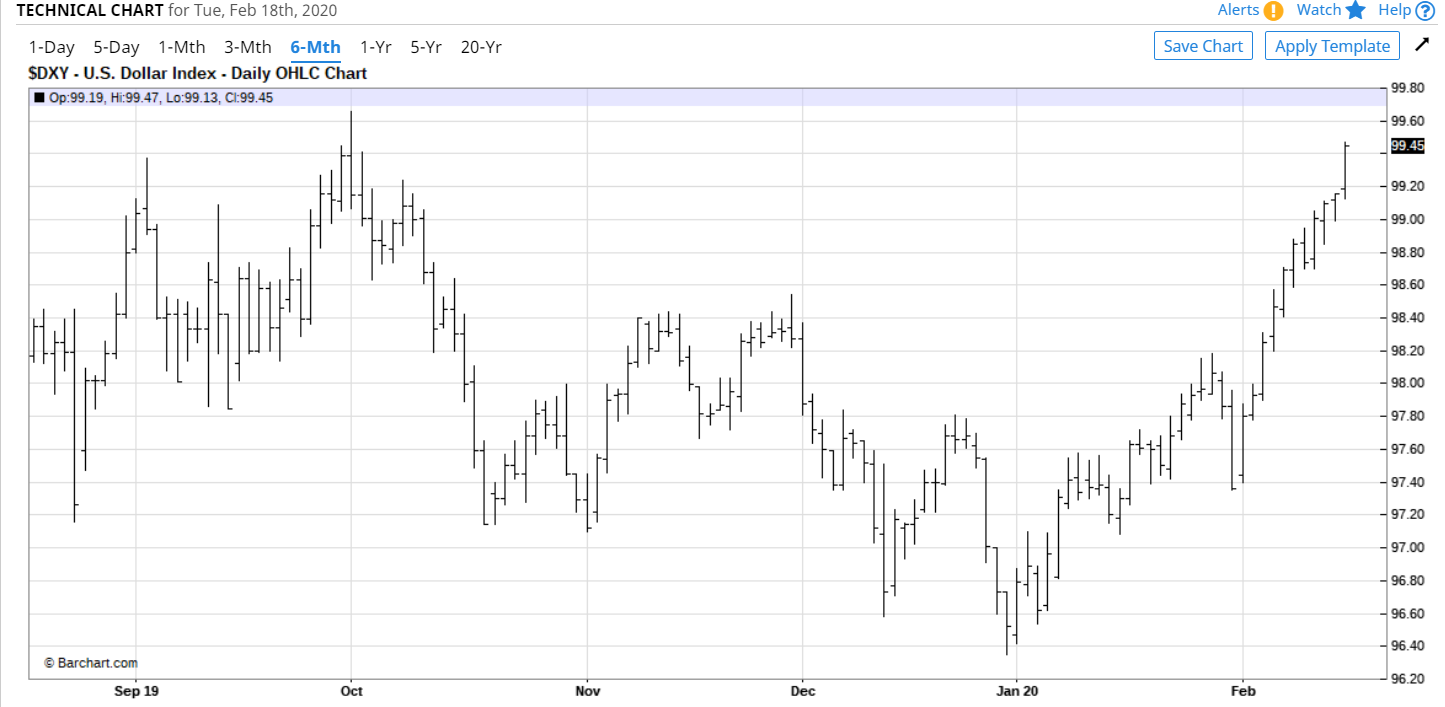
- USD/DXY – The Dollar Index, often the opposite mirror of the Euro, rallied to 99.474 overnight and October 2019 highs before easing to settle at 99.434.
On the Lookout: With US markets back in full force today, a data deluge follows. The big event is the FOMC release of its latest meeting minutes (6.00 am Thursday, Sydney time). Prior to that FOMC Members Mester, Kashkari and Kaplan will speak at different functions in different venues.
Data releases start off with Japan’s Trade Balance and Core Machinery Orders for January. Australia reports on its Q4 Wage Price Index on both an annual and quarterly basis. European reports kick off with the Eurozone Current Account. The UK follows with its Headline, and Core CPI, PPI Input and Output, HPI and RPI reports. Canadian Headline and Core CPI, Trimmed CPI are next. The US rounds up the days data with Building Permits, Housing Starts and Headline and Core CPI reports.
Trading Perspective: The Euro’s fall fuelled the Dollar’s rally as bearish sentiment continued to overwhelm the shared currency. US treasury yields extended their falls with the benchmark 10-year yield closing at 1.56% and approaching 1.5%. The US 30-year bond yield dropped 4 basis points to 2.0%. Global rival yields were also down but to a lesser extent. Narrower US yield differentials will eventually see a lower Dollar.
We reported yesterday that long US Dollar market positioning increased in the latest week. This is a in risk of a correction which will trigger a big turn in the Greenback’s fortunes.
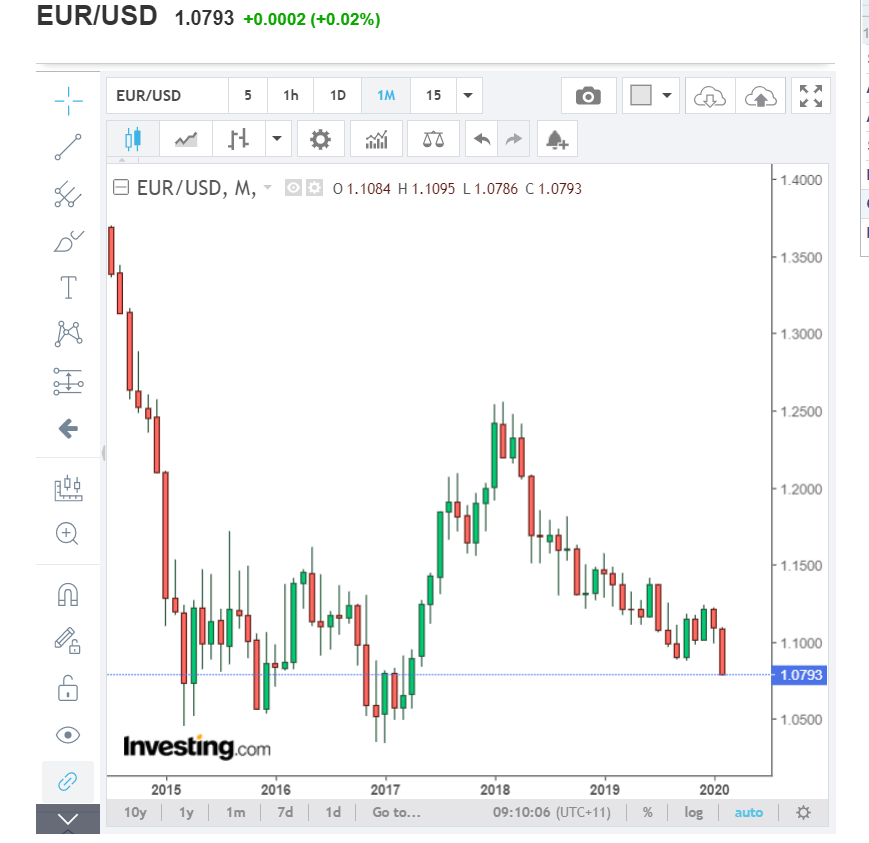
- EUR/USD – With little Euro area data released today, the focus turns to US data, Fed speak and the FOMC meeting minutes. EUR/USD has immediate support at the overnight lows around 1.0785. The next support level can be found at 1.0750 and 1.0700. While the selling pressure is intense, expect supports to hold. Immediate resistance lies at 1.0810 followed by 1.0840. Speculative market positing remains short of Euro bets. The latest COT report saw a big increase in Euro short bets to -EUR 85,669 contracts from -EUR 75,080. That’s huge. The equivalent is -EUR 10.7 billion. A danger sign flashing to this writer/trader. Look for a likely range today of 1.0770-1.0870. Prefer to buy dips, the Euro is ripe for a correction.
- AUD/USD – Like the Euro, the Aussie faces strong selling pressure in the current environment. The latest COT report (week ended 11 February) saw net speculative Aussie shorts trimmed to -AUD 32,668 contracts from -AUD 43,297. Australian Wage Price Index for Q4 is released today, forecasts are for a q/q rise of 0.5%. A higher data report will see the Aussie back above 0.67 cents. A lower number of 0.4% will see the 0.6663 multi-year low tested first before a bounce. Look to trade a likely range today of 0.6665-0.6725. Prefer to buy dips.
- USD/JPY – The Dollar ended modestly lower against the Yen at 109.87. The US 10-year treasury yield dropped to 1.55% from 1.58%. Japan’s 10-year JGB yield was 3 basis points lower to -0.07%, matching the fall of its US counterpart. USD/JPY has immediate resistance at 110.00 (109.947 overnight high) followed by 110.15. Immediate support can be found at 109.65 and 109.35. Look for a likely range today of 109.25-109.95. Prefer to sell USD/JPY rallies.
Happy trading all.




